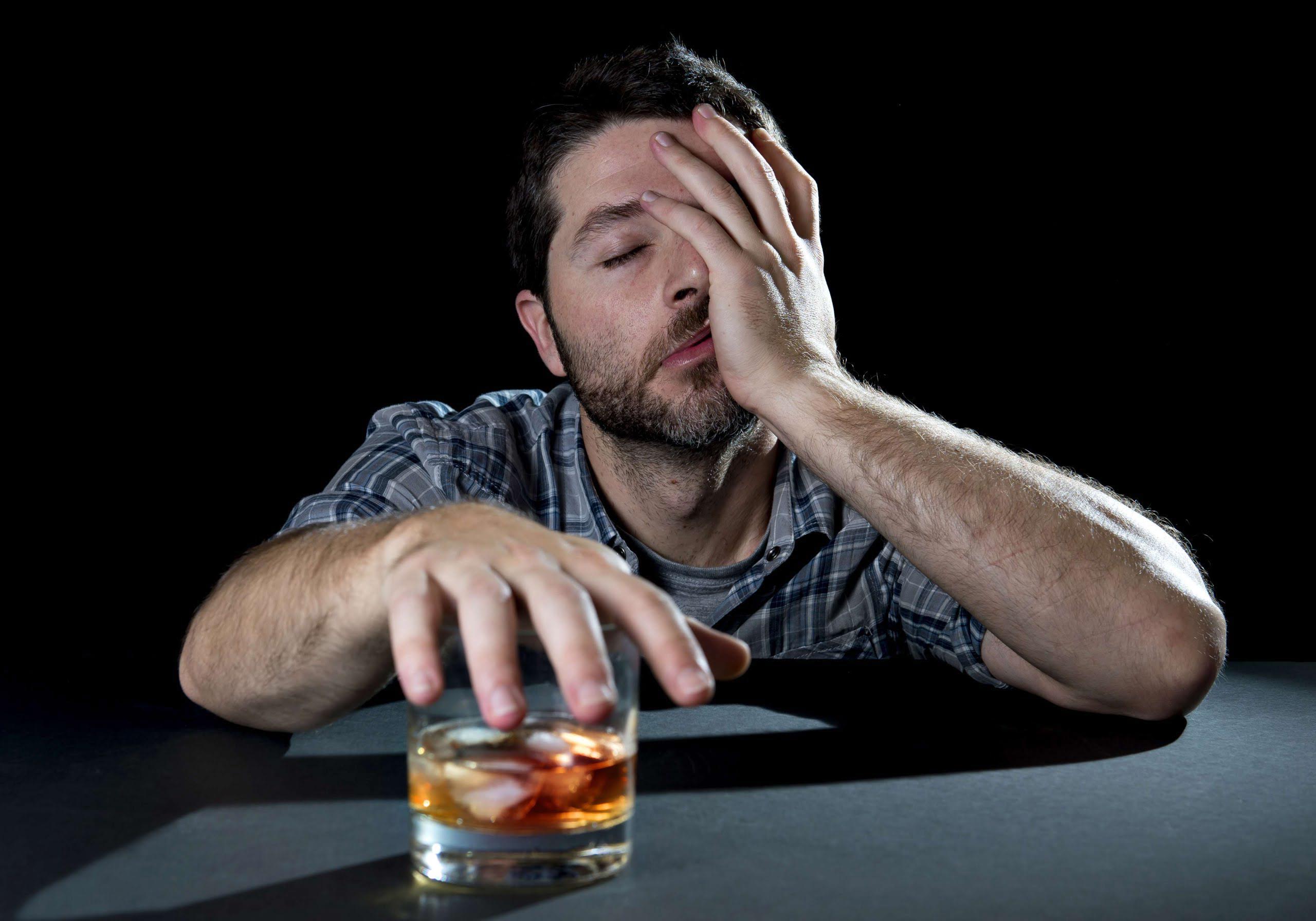However, there is little certainty in cases of patients with comorbid AnxDs and AUDs, and it Halfway house is not clear whether the recommendations issued separately for patients with AnxDs or AUDs can be accepted in comorbid patients. Furthermore, several studies have been carried out using non-approved medicines (off-label prescription) in patients with AUD and AnxD. One of the five major components of the glutamate system, the N-methyl-d-aspartate (NMDA) receptor (27), could play a role in the risk of benzodiazepine abuse. In this sense, the NMDA receptor antagonist-benzodiazepine has been involved in abuse liability (28).

These disorders can manifest in various forms, including generalized anxiety disorder, social anxiety disorder, and panic disorder. On the other hand, alcohol use is deeply ingrained in many cultures and social settings, often serving as a means of relaxation or social lubrication. Second, the possibility that a longer term anxiety or depressive disorder exists in an alcoholic must always be considered.
Factors such as dehydration, lack of quality sleep, and alcohol withdrawal symptoms can further contribute to prolonged anxiety. Understanding the potential for alcohol-induced anxiety to linger beyond the initial consumption period is essential for those seeking to manage their mental health effectively. Only one notable study of COA’s has demonstrated a higher-than-expected risk for these https://eighteco.com.br/relapse-prevention-strategies-to-avoid-triggers/ major psychiatric disorders. However, as pointed out by Kushner (1996), larger studies of COA’s who have passed the age of risk for most disorders will need to be conducted before final conclusions can be drawn. It is, therefore, not surprising that more than one out of every three alcoholics has experienced episodes of intense depression and/or severe anxiety (Cox et al. 1990; Wilson 1988). These psychological conditions are often intense enough to interfere with life functioning, and the symptoms are often recognized by physicians and other health care providers as serious enough to require treatment.
Clinical Guidelines Analysis
CBT allows you to examine these negative thought patterns and create healthier ones that can ultimately lessen your anxiety symptoms. On top of exacerbating anxiety in the long run, chronic alcohol use leads to other mental health concerns. For example, chronic heavy drinking can lead to worsening depression and an increased risk of suicide.
The Relationship Between Alcohol And Anxiety
Alcohol consumption and alcohol-related diseases are higher in Europe than anywhere else in the world 33, 34. Many individuals experience heightened anxiety and depressive symptoms following alcohol consumption, a phenomenon often referred to as “hangxiety.” This post-drinking anxiety can be attributed to several biological factors. As alcohol leaves the system, the body experiences a rebound effect, leading to increased heart rate, blood pressure, and feelings of restlessness – all of which can trigger anxiety symptoms. Around 20% of people with anxiety disorders report self-medicating with alcohol. If you’re drinking to decrease your anxiety, you are only putting a (not-so-useful) band-aid on the situation rather than addressing the root cause.
Co-occurring disorders: Anxiety and Alcoholism
Residential treatment can be helpful for someone who needs help detoxing, has an unsafe home life, or is severely addicted. Ideally, they should be addressed and treated together to ensure neither the anxiety nor AUD triggers one another. Because of these potentially deadly symptoms, a person struggling with AUD should never attempt to quit alone.
- When patients who drink heavily report anxiety, it helps to create a timeline with them to discern whether the anxiety is alcohol-induced or, instead, a pre-existing or primary anxiety disorder, which can help set expectations and a treatment plan.
- Chronic illnesses, such as liver disease or cardiovascular conditions, can interact with alcohol use to worsen anxiety symptoms.
- Ordinary least squares regression evaluating interactions between gender, depression, anxiety scores and the number of drinks consumed by men and women.
- Brunei has the most significant effect on bidirectional causal relationships linking anxiety to wine, beer, and spirits consumption.
Genetic and Age-Related Risk Factors
At the same time, Portugal has the highest anxiety prevalence, with 8,671 cases per 100,000 people 18. Further, people in Portugal showed a negative correlation between excessive alcohol consumption and significant depression, but a positive correlation between excessive alcohol consumption and anxiety disorders. Although these studies raise important questions, researchers cannot draw definitive conclusions about the association between alcoholism and psychiatric disorders for a number of reasons. The major problem encountered in these studies involved the use of research methods that failed to address several important issues that might have explained the observed relationships (Allan 1995; Schuckit and Hesselbrock 1994). Specifically, some studies focused on drinking patterns rather than on alcohol dependence or described mood/anxiety symptoms rather than true psychiatric disorders. The distinction is important, because symptoms might be only temporary, whereas true psychiatric disorders are likely to require long-term and more intensive treatments, including psychotherapy and medication.
Anxiety and Alcohol Use Disorders
A questionnaire was developed to examine anxiety, depression, and drinking behavior in college students. A logistic regression was then used to explore whether anxiety or depression symptoms moderated the relationship between alcohol use across gender. Lastly, ordinary least squares (OLS) regressions were performed to evaluate the relation between gender, anxiety, depression, does alcohol give you anxiety and the total number of drinks consumed by survey respondents during the past 30 days.

These effects can make it seem like drinking alcohol is providing the person with relief from their anxiety. If you take medication for anxiety, or you take anti-inflammatory drugs or narcotics, drinking can cause problems with anxiety. You can become agitated and jittery because your body is busy processing the alcohol, which neutralizes the effect of these medications. Even if you’re consuming a standard amount of alcohol — a 12-ounce beer or a 5-ounce glass of wine — you’ll experience a mild detox or withdrawal. It takes your body and liver about eight hours to remove what’s essentially a poison. As this is happening, it can affect your central nervous system and cause you to feel jittery or anxious.
Irritability is more common in individuals who consume alcohol heavily over long periods. Individuals with a family history of alcohol use disorder or anxiety disorders may be genetically predisposed to developing these conditions. Research shows that certain genetic markers increase the likelihood of experiencing anxiety in response to alcohol. Physical symptoms can also signal co-occurring alcohol use and anxiety disorders. These might include tremors, sweating, or difficulty sleeping, which can be caused by both anxiety and alcohol withdrawal.
These programs address both conditions simultaneously and recognize the synergy between them. Therapists experienced in treating co-occurring disorders can tailor interventions to treat symptoms and address the root causes of anxiety and alcohol addiction. This might include therapies like CBT alongside medication management for anxiety, as well as relapse prevention strategies for staying sober long-term. Integrated programs can be highly effective, healing underlying problems and teaching the skills you need to manage your anxiety and live a fulfilling, alcohol-free life. When patients who drink heavily report anxiety, it helps to create a timeline with them to discern whether the anxiety is alcohol-induced or, instead, a pre-existing or primary anxiety disorder, which can help set expectations and a treatment plan.
Alcohol consumption, depression, and anxiety are conditions that have significant implications for individual well-being and public health both independently and together. Alcohol use disorders frequently co-occur with depression and anxiety disorders, with each condition exacerbating the severity and chronicity of the others. A central prediction of this causal model is that abstinence from alcohol should be followed closely by a conspicuous decrement in anxiety symptoms. Data from a study of 53 patients who participated in alcohol treatment at a residential substance abuse program were consistent with this prediction (Kushner et al. 2005). Thus, among those 23 patients who had an anxiety disorder at baseline and remained abstinent after approximately 120 days, 61 percent no longer met criteria for an anxiety disorder at follow-up.
